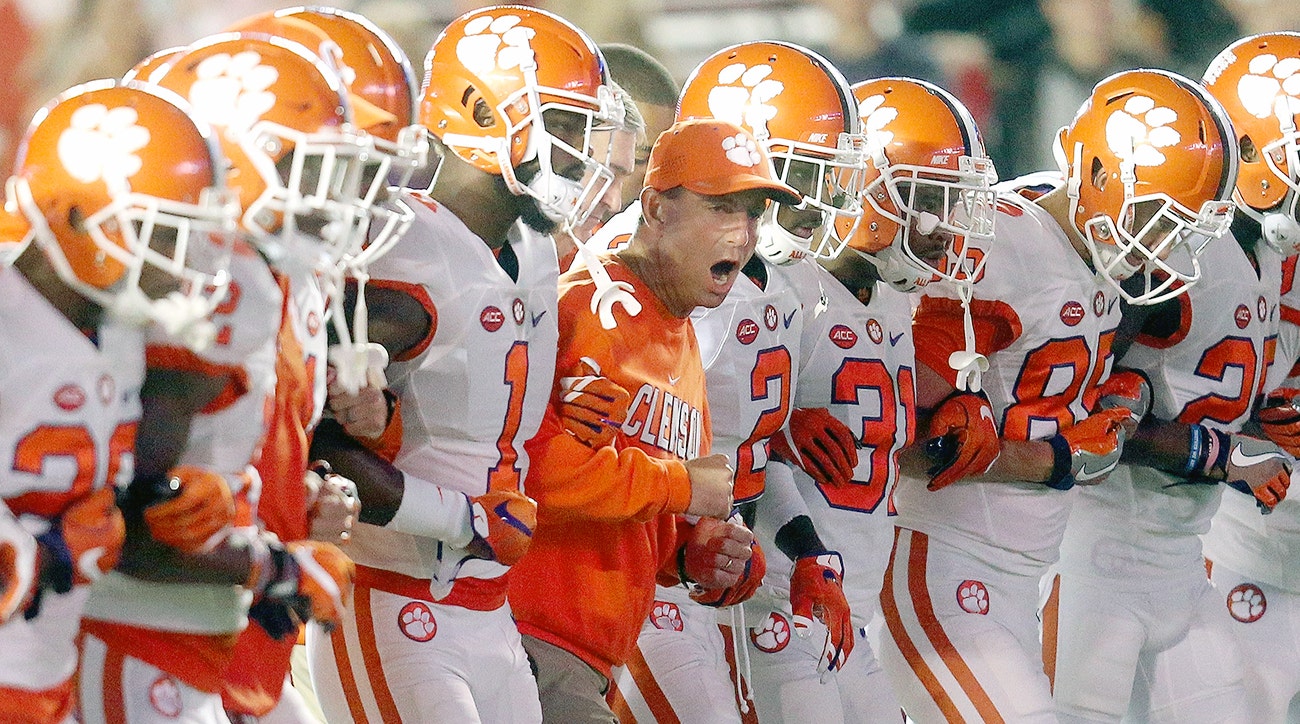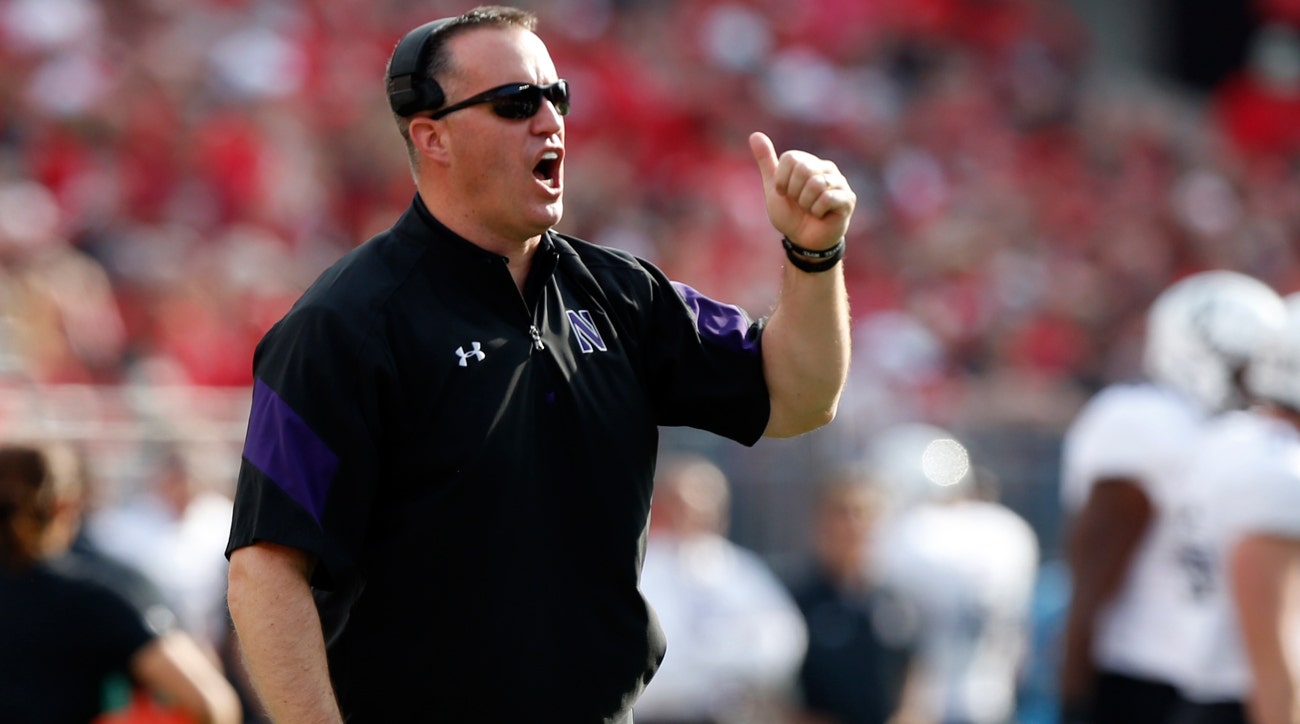And here is Mandel's most recent update, from 2017.Fox SportsCollege football program pecking order 3.0: Dividing all 66 BCS teams into four-tier hierarchy
Stewart MandelStewart Mandel @slmandelMay 27, 2017 at 9:22a ETI’ve written hundreds of Mailbag columns over the years. For the most part, readers consume them, (hopefully) enjoy them, and then forget about them as soon as the next one arrives.
But one particular question I answered in August 2007 took on a life of its own. A reader asked me to rank the nation’s power-conference schools by “prestige and place in the national scene.” For reasons I can’t recall, I opted to invoke a Medieval feudal system in dividing the 66 BCS programs at the time into Kings, Knights, Barons and Peasants.
Thus, my
Program Pecking Order was born.
People took the thing pretty seriously. One
Georgia blog actually enlisted a Dawgs fan to go around to sports bars in Montana testing my premise that the “G” helmet is not universally recognizable enough to merit a spot in the top group. (An “A” for effort, though it turned out I was right.)

And of course, people began asking me to do another one as soon as the very next year. But to do so would have run counter to my thesis, which is that most programs’ prestige levels are too deeply entrenched to change much based on a couple of good or bad years.
If Ohio State inexplicably goes 0-12 this season, it will still be one of the sport’s Kings. If Kansas inexplicably goes 10-2, sorry Jayhawks fans, but Kansas would still be a Peasant.
So my answer at the time was, let’s wait five years. In 2012, I did
revisit the list and make a few changes. Even then, five years wasn’t enough time for most to upend perceptions built over decades and decades.
But now, incredibly, it’s been a decade since the original list. And a lot has changed in that time.
In 2007, Clemson had not been nationally relevant for nearly a quarter-century; now it’s the reigning national champ. In 2007, Baylor had been the Big 12’s worst team for a decade; it more recently dominated that conference prior to its devastating sexual assault scandal.
But perhaps most significantly, the sport’s entire power conference structure changed due both to realignment and the advent of the playoff. Those shifts alone account for many of the changes in this, my 2017 Program Pecking Order.
Before I begin, I can’t emphasize enough that this concept is far from scientific. As laid out in that original column, a “national power” is defined by “something more than wins and losses. It’s a certain cachet or aura. It’s the way a program is perceived by the public.”

That perception is derived in large part both by a program’s historical achievements and its more recent accomplishments, but it also encompasses everything from TV contracts to iconic uniforms to famed mascots to … yes, helmets. Prestige arguably shows itself most directly in the annual recruiting rankings, where we usually see the same group of programs finish in the roughly the same range year-in, year-out, regardless of annual ebbs and flows in their win-loss columns.
So here we go.
The 2017 list comprises 66 schools — the Power 5 conference members and independents Notre Dame and BYU. It’s a harsh reality, but in the playoff era, every Group of 5 school — even standouts like Boise State and Houston — is seen as a peasant (or worse), so there’s no point listing them.
Thanks to my friends at SI.com for re-formatting the old columns to fit their current design. For this version, teams in bold moved up in status from the 2012 edition. Strikethrough teams fell down.
Kings- Alabama
- Clemson
- Florida
- Florida State
- LSU
- Miami
- Michigan
Nebraska- Notre Dame
- Ohio State
- Oklahoma
- Penn State
- Texas
- USC
I’m 41 years old. In my teens, 20s and early-to-mid 30s, you could never have convinced me Nebraska would one day be viewed as anything less than college football royalty. But today’s recruits were not even born the last time the Huskers won even a conference championship, in 1999, much less Tom Osborne’s three national titles in four years from 1994-97.
And while the school’s move to the Big Ten unquestionably benefits the program financially, few would contend Nebraska is viewed in the same grouping as league powers Ohio State, Michigan and Penn State. Its perception at this point more closely resembles those of Wisconsin and Michigan State.

I suppose one could make much the same argument against five-time national champ Miami remaining among the kings. The ‘Canes have not won more than nine games in a season since 2003. But I’d argue the “U” still carries a ton of cachet given its alums’ heavy presence in the NFL — and recruits agree.
As for Clemson, it’s pretty simple. Dabo Swinney and Deshaun Watson elevated the program’s profile immeasurably, and winning a national championship legitimized it in a way that, say, Oregon, never quite pulled off.
Barons- Auburn
- Georgia
- Michigan State
- Nebraska
- Oregon
- Stanford
- Tennessee
- Texas A&M
- UCLA
- Virginia Tech
West Virginia- Wisconsin
Stanford and Michigan State (prior to last season) have been two of the most successful programs in the country since the start of this decade — three Rose Bowls and six double-digit win seasons for the Cardinal, five 11-win seasons and a 2015 playoff berth for the Spartans. Stanford in particular has completely reinvented its brand as the sport’s smash-mouth smart school.
Like Nebraska, West Virginia has suffered in part by a necessary change of conference, going from a regular Big East/BCS contender to mostly middle-of-the-pack (last year excluded) finisher and geographic misfit in the Big 12. Its prestige level has slipped accordingly.
Knights- Arizona State
- Arkansas
- Baylor
Boise StateBoston College- BYU
- Cal
- Colorado
- Georgia Tech
- Illinois
- Iowa
- Kansas State
- Louisville
- Maryland
- Missouri
- North Carolina
- NC State
- Northwestern
- Oklahoma State
- Ole Miss
Oregon State- Pittsburgh
Purdue- Syracuse
- South Carolina
- TCU
- Texas Tech
- Utah
- West Virginia
- Virginia
- Washington
Baylor’s brand may be toxic now, but there’s no doubt the school raised its profile considerably — for good and bad — under offensive genius-turned-pariah Art Briles. Louisville has enjoyed the fruits of both moving up to the ACC and turning out stars Teddy Bridgewater and Lamar Jackson.
Northwestern has now permanently shed its half-century reputation as a lovable loser by becoming a near-annual bowl team with a widely respected coach, Pat Fitzgerald. And frankly, I can’t recall why I had North Carolina down among the peasants to begin with.

On the flip side, while Boston College and Purdue have both enjoyed high points over their respective histories, their extended stints of mediocrity now come to mind first. Oregon State, after a brief renaissance under Mike Riley, has returned to its cellar-dweller ways. Boise State, as I wrote before, is simply disqualified, though the Broncos to their credit remain the most widely respected Group of 5 program.
Peasants- Arizona
- Boston College
- Duke
- Minnesota
- Indiana
- Iowa State
- Kansas
- Kentucky
- Mississippi State
- Oregon State
- Purdue
- Rutgers
- Wake Forest
- Washington State
- Vanderbilt
My lowest tier pared down from 20 to a more exclusive 15 not so much because of promotions but because four former Big East schools (Cincinnati, USF, Connecticut and Temple) fell off this list entirely.
My guess is fans with the biggest beef will be those of Mississippi State, given it’s just three years removed from debuting at No. 1 in the first-ever selection committee rankings. No question, Dak Prescott led the Bulldogs on a glorious two-season run … but it was just that, two seasons.
In conclusion, if we go back and compare this list to the original we get a sense just how much — or how little — college football’s perceived hierarchy changes in the span of a decade. Here’s how it breaks down.
- Eleven of the 13 Kings remained the same, with LSU and Clemson supplanting Tennessee and Nebraska.
- There was more movement in and out of the Barons, with just six originals among the current 11. Oregon, Michigan State and Stanford all ascended from Knights.
- It’s really hard to escape the realm of peasantry. Baylor, Northwestern and North Carolina were the only ones to do it.
- All told, 16 of the 66 BCS-conference schools circa 2007 — just less than a quarter — changed tiers over the span of 10 years.
Worth noting: Louisville was the most ascendant program of all, going from unranked (apparently out of indecision) in 2007 to Peasants in 2012 to Knights in 2017.
Finally, if by chance I’m still writing these columns in another five years, I’d say the safest prediction is that Washington under Chris Petersen will have bumped itself up a tier (with last year’s playoff berth the beginning of the breakthrough). Conversely, Illinois is on shakiest ground for potential demotion.
Thanks for following along for another five years. On the off, off chance you disagree with where I have one more teams placed, be sure to let me know at stewart.mandel@fox.com.

